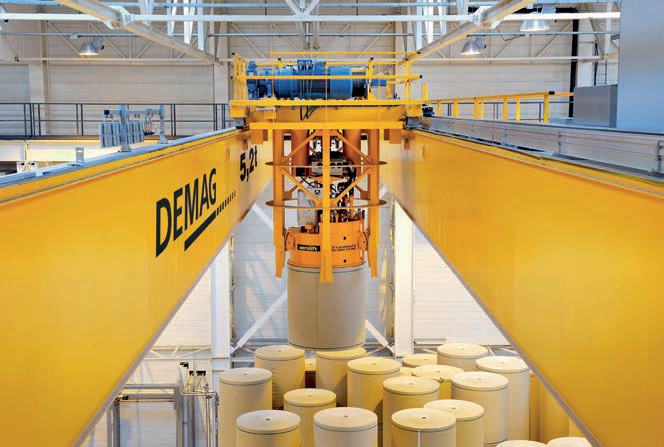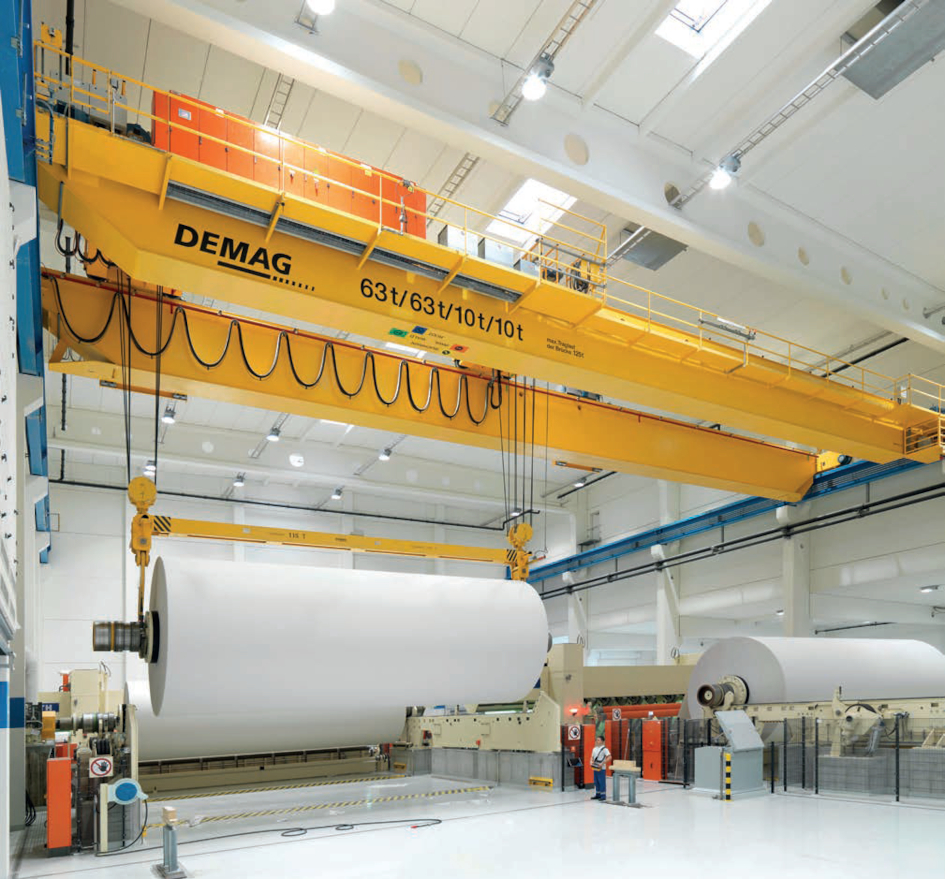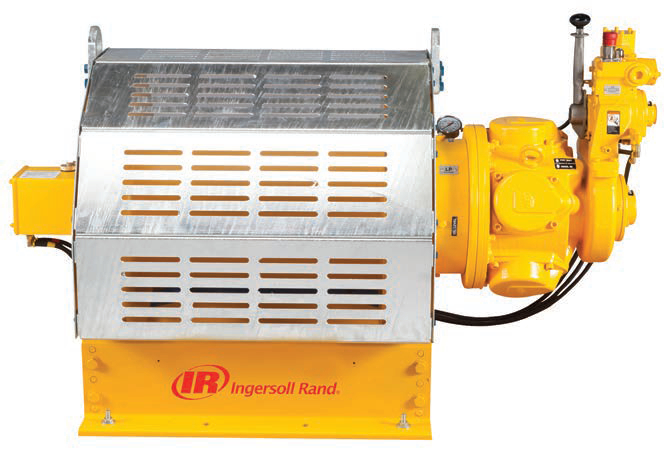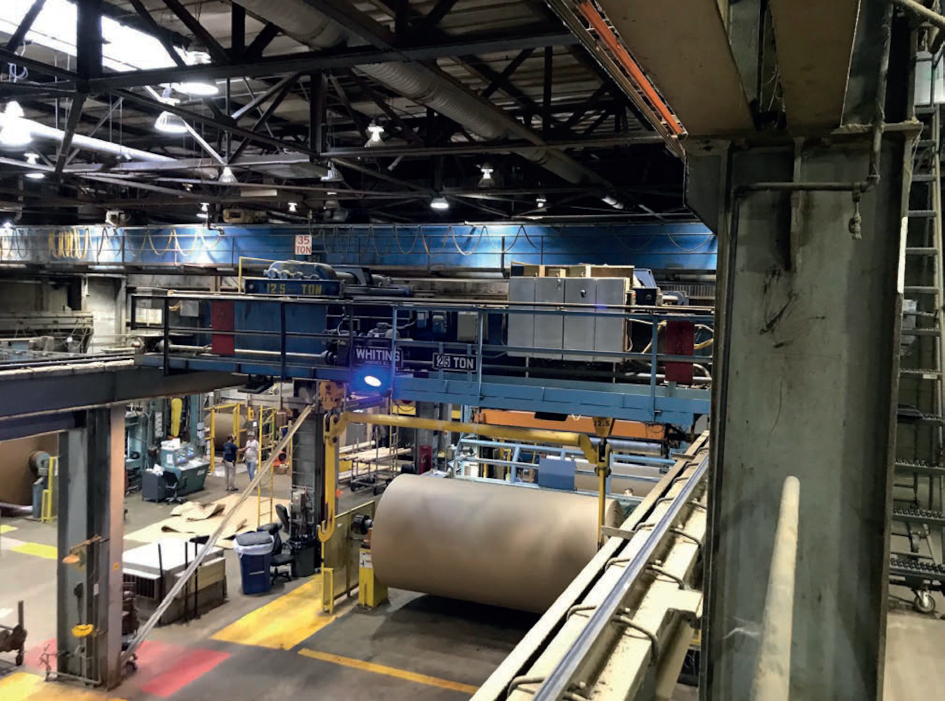Pulp Faction
13 July 2021The paper and cardstock industry continues to see growth and challenges. While some mills are upgrading production capacity or investing in ergonomics, others are shutting down. Mike Straus looks at the factors driving industry trends.
The pulp and paper industry has been in an unusual state since the start of the Covid-19 pandemic. Some companies, like paper company Stora Enso in Helsinki, Uusimaa, Finland, have closed paper mills due to falling demand for paper products, choosing instead to focus on the growing cardboard packaging market. Other producers that specialize in the medical-grade pulp used in N95 respirators, like Harmac Pacific in Nanaimo, British Columbia, Canada, have seen sales boom and are now struggling to keep up with a spike in demand. Paper and cardstock industry trends appear to be both product-dependent and region-specific, which brings opportunities for companies that can pivot and challenges for those that cannot.
Chuck Snook, product sales manager for the Americas for Konecranes in Burlington, Ontario, Canada, says the pulp and paper products industry continues to see strong growth as the pandemic pushes demand for consumer staples and shipping boxes higher. “There are several new production lines being installed (in paper mills),” Snook says. “Toilet paper and packaging continue to grow. Line rates are going up, and the issue has now become finding better ways to both feed the machines and take the finished products off them.”
Demand for toilet paper increased by 845% last year in the United States alone, according to Business Insider, prompting companies like Ho Chi Minh City, Vietnam-based Xuan Mai Paper to install new production equipment for high-quality toilet paper, facial tissues, and paper towels. The paper towel market experienced 264% sales growth during the initial months of the pandemic, according to Research and Markets, mostly due to consumer concerns around reusable cleaning cloths potentially harbouring viral particles. Meanwhile, market research firm Technavio expects the global corrugated box market to grow by 4% per year through to 2024 as a result of growth in e-commerce. San Jose, California, USA software firm Adobe estimated in its 2020 Digital Economy Index that the pandemic has prompted e-commerce to leap forward by four to six years, leading to an increase in demand for cardboard boxes.
In addition to productivity upgrades at paper mills, Snook says new technologies are being implemented in the hoists and cranes used in the paper sector, particularly technologies that enhance safety or improve communications. There is a growing demand for wireless solutions that can provide real-time operational and safety information to hoist operators and fleet managers.
“We’re equipping remote monitoring on all new hoists and cranes, whether it’s a smaller rope hoist or a large ETO crane,” Snook notes. “(Remote monitoring units) provide critical alerts and real-time operating statistics, and it’s all cloud-based so we can right-size maintenance programs. If there are critical alerts that happen, the app will text the user.”
Smart remote monitoring technology is enabling Konecranes customers to pinpoint causes of overloading issues, identify which shift overloaded the hoist, and, in the case of multi-hoist applications, determine which hoist overloaded. Snook says this kind of real-time data gives companies the ability to enhance operator training, improve productivity, and minimize risk. All of this technology is completely wireless, he says, with the hoist and the diagnostic unit connected to each other via a modem that runs through a secure 3G network.
Snook says that a growing trend in paper mills involves using hoists for smaller tasks and lighter loads. A renewed focus on ergonomics is driving companies to seek out light-duty lift assist products for loads as small as 13 kilograms. The demand among pulp and paper mill operators, he says, is for lifting products that can enable a high uptime and prevent product damage while also reducing repetitive strain injuries among operators.
Another trend on the rise is automation. Gerhard Lange, Paper Industry Process Cranes project manager for Demag in Düsseldorf, North Rhine-Westphalia, Germany, says the paper industry’s growing sales reflect the sector’s willingness to invest. Lange says the pressure to automate processes and logistics in the paper industry is always increasing, which has led Demag to design new dry reel handling automation solutions.
“We’re receiving a number of inquiries for fully automated stores for corrugated-board plants,” Lange says. “Sometimes, these are installed right behind the production plant. In contrast to shipping warehouses, the material flow in this type of store is not dictated by truck loading times, but by production processes.”
Demag has several paper industry projects in the installation and startup phase. Lange cites the example of a paper roll warehouse in Asia that will soon enter service. When completed, it will be the largest paper roll warehouse in the world, featuring nine cranes in three bays. The cranes will handle the storage and logistics for a new paper machine.
Demag recently completed an installation of an automated vertical paper roll storage system for Laakirchen Papier, a Heinzel Group subsidiary headquartered in Laakirchen, Gmunden District, Austria. The material handling system consists of two Demag process cranes equipped with winches and vacuum lifting units. Each of the two 33-metre-span process cranes can move single rolls or pairs of rolls weighing up to 4.5 metric tonnes. The winches can travel independently of each other and can move up to 104 rolls per hour, taking 30% less time than a ground-based storage and loading system.
“This technology helps to achieve higher handling rates compared to conventional single-trolley technology,” Lange explains. “Higher handling rate requirements can even be met for systems limited in size.”
Demag is also installing a number of warehouse management systems for paper shipping facilities. This system, Lange says, enables shipping sites to better utilize the space outside of the storage area. The system’s yard management tools enable operators to run computer simulations of loading and unloading processes in order to find process efficiencies that can shorten turnaround times.
Lange says that paper producers around the world are under considerable pressure to expand production capacity in order to meet demand.
The European and Asian manufacturing industries need cardboard for product packaging, and specialty paper products like graphic paper and facial tissues are growth drivers within the paper industry. The pressure to keep productivity high, Lange says, has even prompted Demag to develop a new solution for a client that minimizes downtime.
The solution, for a paper production plant in Germany, enables maintenance and inspection of a hoist and its load handling attachments without interrupting the operation of adjacent cranes in the same bay.
“Year-on-year growth continues to be forecast for the paper industry,” Lange says. “Above-average growth is expected for packaging papers in particular. We’re seeing strong demand from a variety of regions.”
NO MORE STALLING
This growth in demand for paper and cardstock products is prompting paper companies to start investing in long-delayed upgrades, at least in the United States. Ricky Barnes, regional manager for the Southeast for Whiting Services, in Monee, Illinois, USA, says that since November 2020, the growth in demand has stressed machinery to the point that much of the older equipment cannot handle the strain. Barnes says that he is currently working with a number of Whiting customers to begin repairing, replacing, and modernizing equipment.
“Our customers are bringing lines back up that have been idle for as much as ten years,” Barnes says.
“Procrastination has caught up with them. We’re actually working with two major (American) production facilities right now, one in the southeast of the United States and one in the northeast. where we are bringing a crane back online that’s been idle for ten years.”
Whiting primarily serves the North American market, with some limited projects in Puerto Rico. He says that the pandemic has prompted paper and card companies, and hoist operators, to change procedures. Overstressing cranes has become more dangerous since the Covid-19 pandemic started. More frequent equipment failures means more frequent site visits from support personnel, which can enable the virus to spread more quickly. Now, Barnes says, a number of companies in the paper and card industry have implemented procedures to avoid overstressing machinery in order to reduce the need for maintenance.
Robert Smilak, Whiting Corporation’s regional sales manager for the Southern United States, says that while paper and card has traditionally been a maintenance market, mills are often now looking to make upgrades to increase capacity and improve reliability. One Whiting customer is currently upgrading a hoist used for an occasional lift task. Whiting worked with this customer to determine how many times per year the hoist can make the lift without exceeding 125% capacity.
“Reliability upgrades are happening a lot, through controls and other safety features,” Smilak explains. “If you have a paper roll sitting there and you can’t move it, that’s wasted product and wasted money. So on our end, we’re seeing a lot of modernization upgrades designed to keep the uptime high and keep people off the crane.”
Smilak says that while demand for paper products is growing, the industry is moving away from newsprint and magazine paper. He suspects an increased need for personal protective equipment is responsible for the industry’s growth. Medical-grade pulp is a critical component of surgical masks and medical gowns, and it is also used in the production of N95 respirator masks.
Media reports indicate that demand for medical-grade pulp has substantially increased. In March 2020, Harmac Pacific told Tofino-Ucluelet Westerly News that one of its American customers, a medical supplies manufacturer, doubled its standard order of K10S medical-grade pulp in order to increase production of medical supplies. The Canadian Broadcasting Corporation reported in May 2020 that Harmac Pacific is the only pulp mill in Canada that manufactures K10S medical-grade pulp.
Barnes expects that paper mills will soon begin prioritizing automated hoist installs. Some of the newer paper plants built in the last few years are almost entirely automated, which, coupled with advanced monitoring technology, enables them to essentially run “with the lights out”.
Paper mills use various types of hoists and cranes for multiple different types of tasks; however, Barnes says a number of mills are prioritizing capacity upgrades for the support cranes that are used during paper machine maintenance. In paper, uptime is a key concern.
There is also an emerging opportunity for better-engineered hoists that have a longer lifespan. Smilak says that over the last 20 years, the American market has become more standardized toward European product specifications and standards that typically require a rebuild every ten years. American paper mills, however, are starting to change their buying attitudes regarding the total cost of ownership.
“The European specs are designed for a ten-year lifecycle,” Smilak says. “But the American mills are starting to prefer a longer-lasting product. That trend isn’t everywhere yet, but I’m starting to see it.”
SAFETY FIRST
As in many industries, the paper and cardstock industry has specific safety needs that are influencing the kinds of equipment in use. Mark Koski, North American commercial leader at Ingersoll Rand in Davidson, North Carolina, USA, says a paper mill is a harsh environment, and paper production involves a significant amount of water.
According to the University of Minnesota, the average paper mill uses 70 litres of water per kilogram of paper produced. As a result, the lifting equipment in paper mills must be waterproof, and therefore the industry preference is for pneumatic hoists with full safety controls. Ingersoll Rand, Koski says, has recently received a number of requests for hoists that are both IP65 water resistant and radio remote controlled.
“More and more, people want the operator removed from the load area,” Koski says. “If they’re using a wire rope winch, they tend to want longer pendants that allow the operator to move further away from the load. That way, if the wire rope snaps, it doesn’t injure the operator.”
Tandem lifting units are also popular in paper and card applications, even with corrugated board. Koski says that lifting the steel rolls that support the paper sheets typically involves either a synchronized double-hook system, which can be a complicated and expensive install, or two separate air hoists that run synchronously. Recently, though, technological innovations in pneumatic hoists have made this process simpler, easier, less expensive, and safer.
“Pneumatic logic has gotten better. If you run all the lines out to a centre point and then run equal length of hose and fittings, then you can use two hoists with one pendant that splits the load. Also, more and more customers in North America are requiring an emergency stop and overload protection. These requirements have been in the European safety directives for decades, but they’re not required in North America,” says Koski.
He adds, one situation Ingersoll Rand has encountered involves operators or maintenance workers who have a stuck load. In these situations, the operator may attempt to pull the load too abruptly in order to free it, resulting in shock loading. At this point, many operators will increase the pneumatic pressure to lift the load, resulting in stress and damage to the hoist components.
“In that situation, overload protection limits the hoist’s ability to be overly stressed, so it won’t lift more than a certain set point – usually 125% of designated load capacity,” adds Koski.
Other safety concerns have also prompted innovation in the pulp mill winches that lift incoming wood logs. Koski says it’s common for these mills to use an outdoor conveyor-based feeder system when machining the logs, and this feeder system is prone to jams. When a log inevitably becomes wedged in the feeder, the operator removes it using a choker sling hooked to a winch.
Ingersoll Rand recently sold one such winch to a client for installation at a pulp mill. “This was a 5 (metric) tonne air winch,” Koski says. “The wire rope ran up around the sheave and fed out to the conveyor. At their first structure about 40 or 50 feet away, there was another sheave. The operator had a 40-foot pendant that was plumbed from a hard-pipe connection at the first sheave point. The wire rope could be hooked around the log and run directly, or, if they needed to pull the log away from the winch, they’d run the rope out to the end, walk up the conveyor, put it through a second sheave, and put it back on the log to pull the log away from the winch.”
The Covid-19 pandemic has boosted demand for a variety of paper and card products while simultaneously forcing manufacturers to implement new safety and mitigation procedures. Meanwhile, paper and card companies are investing in capacity expansion, real-time hoist monitoring tools, ergonomically designed lifting equipment, and a variety of new technologies that improve use of space or reduce downtime. While paper in general is trending downward, extensive growth in e-commerce is creating demand for cardboard and packaging materials significant enough to place pressure on producers. Sales of specialty pulp and paper products, like toilet paper and medical-grade pulp, have grown since the start of the pandemic. Automation and safety technology remain priorities, and improvements in pneumatic logic have enabled simpler tandem lifts. There is also a considerable push within the industry to find innovative new ways to more efficiently use existing space and resources. Hoist equipment providers that cater to specialty paper companies will find opportunities for growth, provided they can meet the unique needs of niche markets.
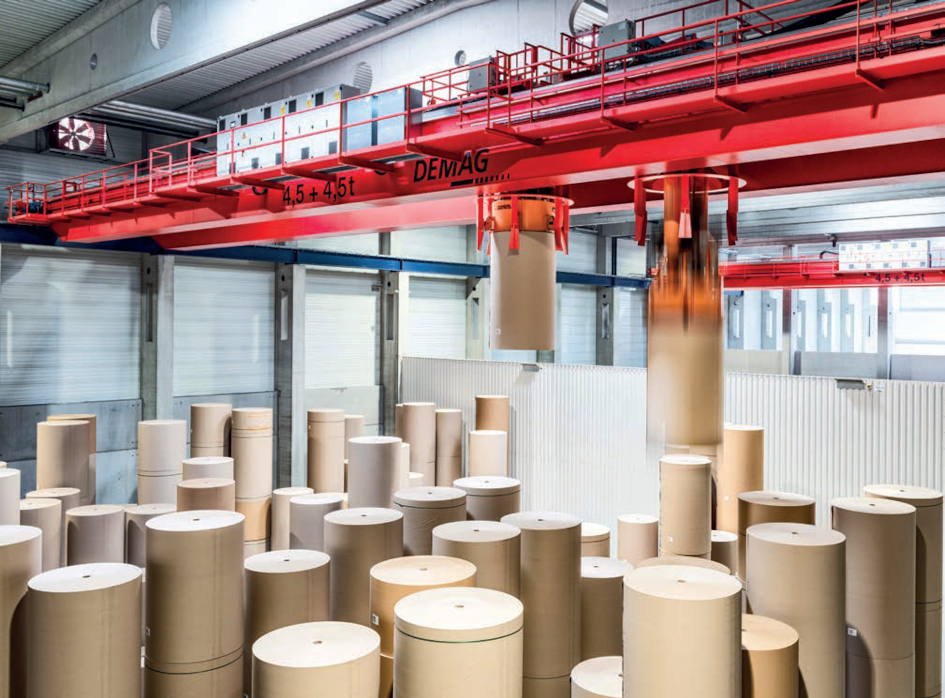 A set of two Demag process cranes, each equipped with two vacuum lifting units, currently in use at Laakirchen Papier AG in Austria.
A set of two Demag process cranes, each equipped with two vacuum lifting units, currently in use at Laakirchen Papier AG in Austria.
